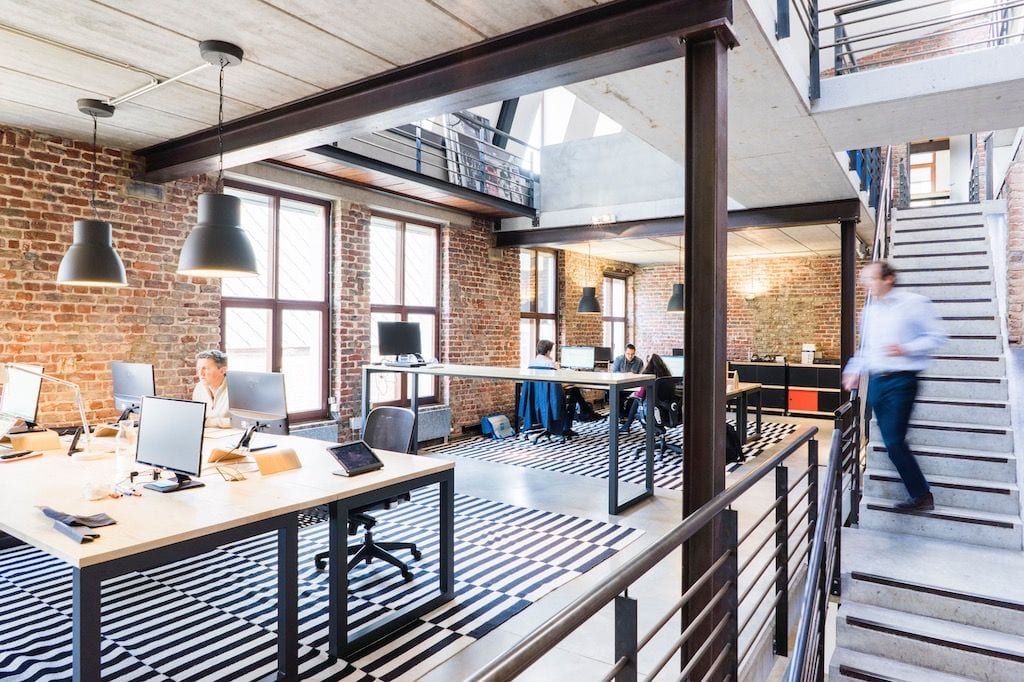
By Dave Clifton
Content Strategist
SpaceIQ
Building intelligence has grown at a rapid pace over the past few years. Beyond the aftermarket sensors and beacons of an ever-expanding IoT, more and more buildings are built smart, bridging the gap between physical and digital. It’s easy to see why. The benefits of smart buildings are numerous, and companies are quickly learning how to harness smart tech into better insights and decision-making for facility operations.
For companies new to the idea of smart buildings or building out a small IoT network of devices, it’s worth understanding the scope of opportunity affiliated with smart buildings. Intelligent technologies enable insights that are becoming increasingly important for companies governing agile workspaces, a flexible workforce, and increasing demands for space versatility.
What is a smart building?
A smart building is one that generates data about itself and how it’s used. Typically, this occurs via the Internet of Things (IoT). Networked IoT sensors turn physical workplace action into digital data, which facility managers can use to make accurate insights about the physical workplace. As a simple example, a pressure sensor in the floor of a conference room can show when that room is occupied. This generates data for real-time insights as well as information about how often it’s used, for how long, and whether the ROI of the space makes sense.
Smart buildings operate on a scale. Sometimes, it’s just a few sensors that provide targeted facility data. Other times, it’s a wide web of IoT devices that paint a complete digital picture of facilities. Regardless of size, the purpose of a smart building is to provide digital data about the physical application of a building and everything that happens within it.
Eight major benefits of smart buildings
The benefits of smart buildings come from the data-generating systems that power them. It’s much easier to understand facilities when there’s data to inform how people use them. Moreover, this works in reverse—it’s easier to manage facilities when you understand them. Here’s a look at some of the benefits of smart buildings and why they’re so important:
- Automation opportunities. The more links there are between the physical workplace and digital management systems, the broader the opportunities for automation. Motion sensitive lights. Floor sensors for occupancy. Beacons to gauge workspace utilization. The IoT triggers powerful automations for a wide assortment of applications.
- Quantifiable building insights. Each data point generated by the IoT is a quantifiable part of the tangible workplace. That means understanding more about how the workplace functions—who’s using it, how they’re using it, and when they’re using it. Data points add up to trends, which add up to actionable insights.
- Predictive maintenance. Through digital twins and similar technologies, buildings and workplaces become managed assets. It’s possible to engage in proactive maintenance and asset upkeep to ensure maximum ROI from these investments. Preventive maintenance becomes a core function of facility upkeep, powered by insights from the IoT.
- Better resource utilization. Consider the resources of the workplace. Space. Manpower. Technology. Smart buildings take these resources and quantify them within the context of broader facilities. The result is a better understanding of how people use those resources and information about how to make them more accessible or available.
- Reduced energy consumption. A product of automation and quantifiable building insights, green initiatives become simpler through smart buildings. Whether it’s motion-sensitive lighting or better HVAC management through a sensor-controlled system, lower energy costs benefit businesses and the environment.
- Real-time building insights. In workspaces with agile desking concepts, real-time insights are paramount. Good governance of these spaces relies on data to see what’s occupied vs. open and what the current status of a workspace is. Smart buildings offer the power to see the workplace as it is in a given moment. It goes beyond workspace occupancy, too. Real time insights extend to every digital representation of the physical building.
- Reduced operational costs. Why make the investment in the IoT? For most companies, it’s about ROI. The insights generated by a smart building need to add up to cost savings through better decision-making. If you can use data from X to make Y conclusion that save $Z, there’s power in leveraging smart building technologies.
- New workplace opportunities. In the new age of evolving work styles, change in the workplace is unavoidable. As flex work and agile workspaces become the new norm, there’s demand for systems to help manage them. This oversight is much easier by smart networks and systems that generate data to support the new workplace and its utilization.
The key takeaway here is data. Data about previously unquantified systems that sheds light on how the physical workplace operates. These insights lead to more meaningful management, both in terms of space and operations. Smart buildings and the IoT have opened the door to better use of buildings, no matter the purpose.
The office: the final corporate data frontier
The benefits of implementing a smart building plan are virtually boundless. There are as many opportunities to benefit as there are avenues to integrate software, processes, workflows, and reporting systems, and to use the information a smart building provides. This information is imperative in adapting the workplace to real-time demands.
As buildings get smarter, they open the door to better workplace agility. Whether your facilities are inherently smart or you’ve augmented them with a growing IoT network, harnessing the power of facilities information leads to better decision-making and more streamlined operations. Every data point counts, and every data point is useful.
Keep reading: The Top Challenges for Creating Smart Buildings








